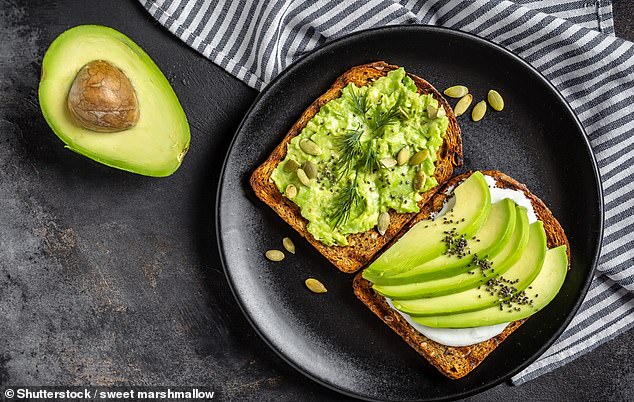If you’ve sliced into an avocado and found it turning brown, don’t throw it away—it’s perfectly safe to eat for up to two days, experts say.
The change in colour isn’t a sign it’s gone bad but simply a harmless chemical reaction that happens when the fruit is exposed to air.
After a couple of days, however, the healthy fats that give avocados their creamy texture and rich flavour begin to turn rancid, leaving a bitter taste—although it still won’t make you ill.
‘If you let it go too far—I’m talking like days—you can get kind of a rancid taste,’ said Matthew Fatino, a subtropical crops expert at the University of California, speaking to LiveScience.
The bright green fruit, packed with heart-healthy fats known to help lower ‘bad’ cholesterol, has become a staple on breakfast tables around the world.
But anyone who’s ever saved half an avocado for later knows how quickly it can lose its vibrant green colour.
According to Mr Fatino, the browning process is simply oxidation—the same natural reaction that occurs when you slice into an apple or banana.
‘When you cut open an avocado, you’re exposing enzymes in the cells to oxygen in the air,’ he explained. ‘That reaction creates melanin, the pigment that turns it brown.’

Experts have revealed exactly why avocados go brown so quickly when you slice into them
The enzyme behind it—polyphenol oxidase (PPO)—exists naturally in both avocados and apples.
As the reaction continues, it can alter the flavour by slightly breaking down the creamy fats within the flesh.
This change doesn’t happen right away, however. For the first day or two, the brown surface is purely cosmetic.
Beyond that point, the fats can oxidise into compounds that taste unpleasantly bitter or ‘soapy,’ a telltale sign they’ve started to go rancid.
If your avocado smells sour, feels sticky or has a slimy texture, that’s when it’s time to bin it. But mild browning alone, experts say, is no cause for alarm.
‘Only the exposed flesh will turn brown, and you can remove that thin layer and enjoy the green part underneath,’ said Sarah Alsing, a dietitian who creates meal-prep recipes for Delightfully Fueled.
The rest of the fruit remains perfectly good to eat, and any bitterness can be disguised by mashing it with lemon juice, salt and chilli — the makings of a perfect slice of avocado toast.
Some avocados also contain brown fibres or stringy strands running through the flesh. These are called ‘vascular bundles’, explained Ms Alsing. ‘They carry nutrients and water to help the avocado grow and are usually seen in fruit from immature trees,’ she said.
Your browser does not support iframes.
They can also appear when avocados are left on the tree too long and begin to over-ripen. At that stage, the pit starts to germinate — the first step in turning into a new plant.
‘The vascular bundles further develop to nourish the seed,’ Ms Alsing added. ‘They may be a bit stringy, but they’re completely safe to eat.’
If you’d rather avoid browning altogether, there are a few simple tricks to slow it down.
Leaving the pit in place helps shield the exposed flesh from oxygen, keeping the area underneath green.
Storing the fruit in an airtight container or tightly wrapped in plastic film also limits air exposure.
Mashing the fruit speeds up the process because it exposes more surface area to oxygen, while adding lemon or lime juice acts as a natural preservative.
‘The citric acid in lemon and lime juice delays oxidation,’ said Mr Fatino. ‘Squeeze a little juice over the avocado flesh to keep it looking fresh and green.’
Storage temperature can also make a difference. Avocados are highly sensitive to both cold and heat, as the trees evolved in the warm subtropical climates of Mexico and Central America.
‘As little as a couple of degrees colder is enough to damage avocado buds and trees, which can ruin a crop for the next year,’ said Mr Fatino.
‘And if it’s too hot, the tree can shut down and drop fruit. With any kind of physical damage, oxygen can get in and the breakdown of the fruit happens faster.’
